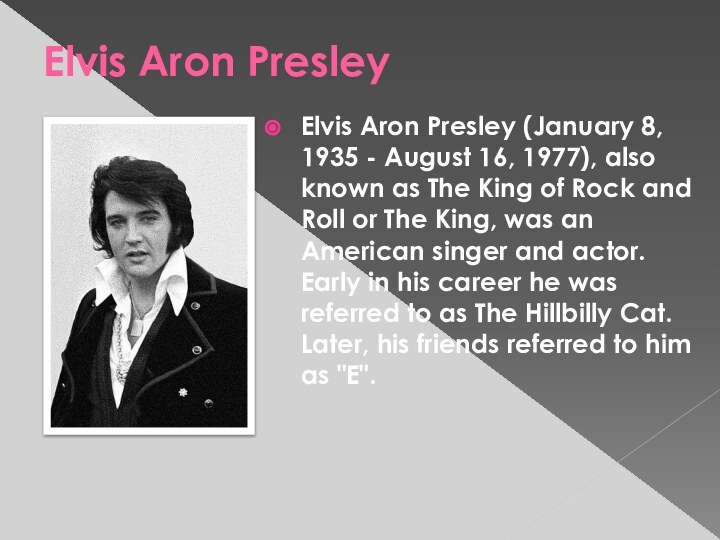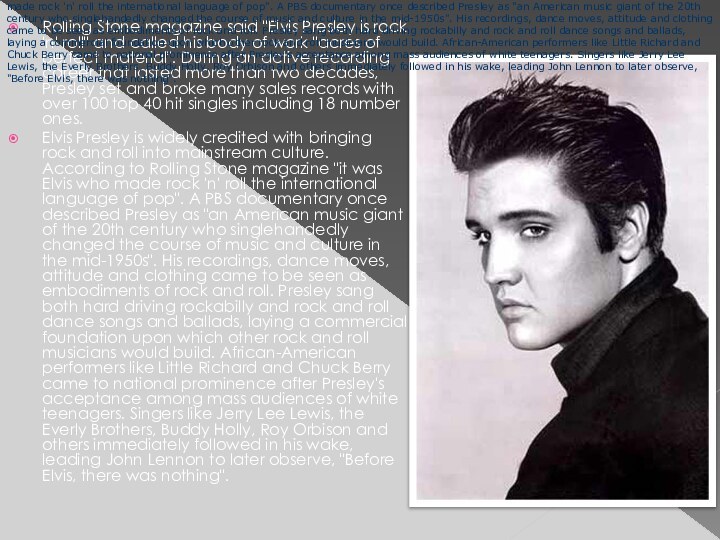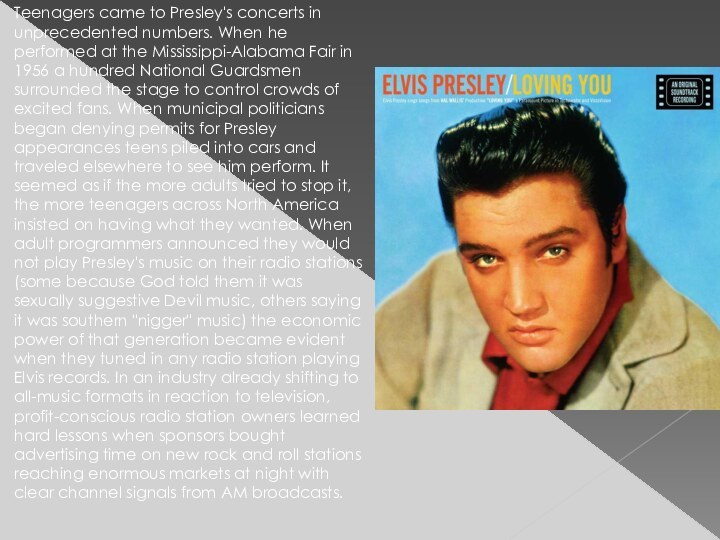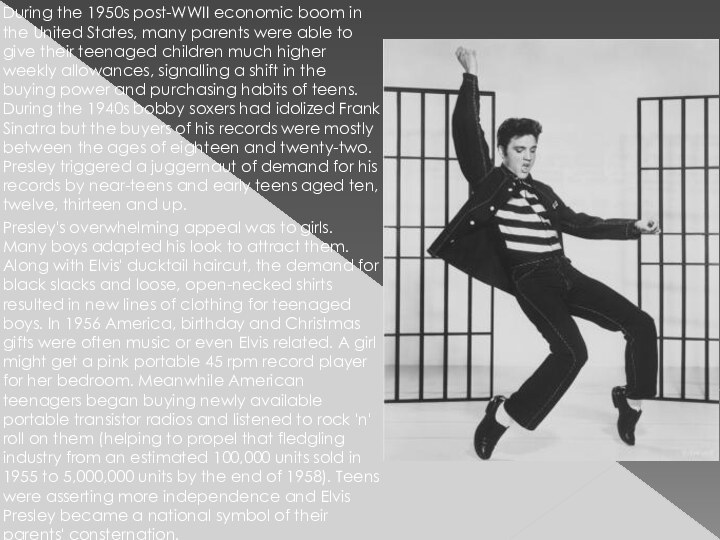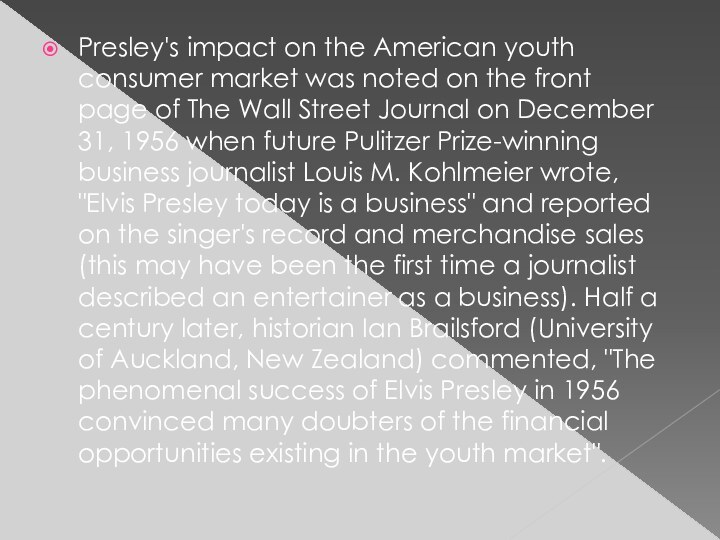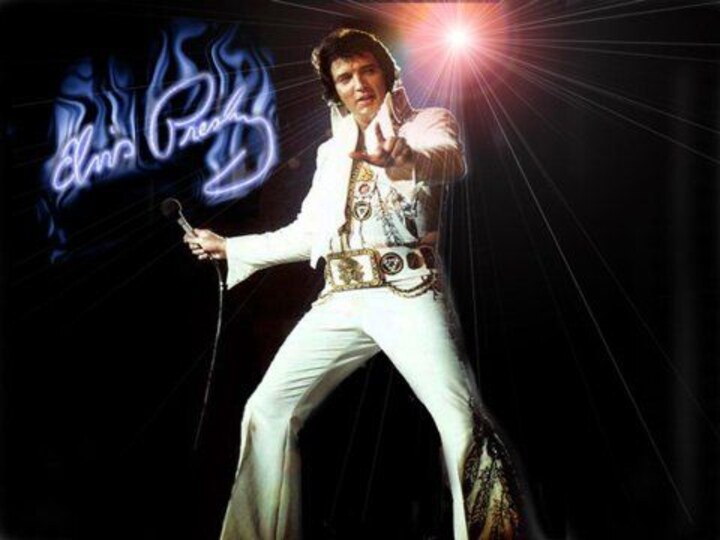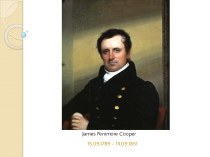'n' roll" and called his body of work "acres
of perfect material". During an active recording career that lasted more than two decades, Presley set and broke many sales records with over 100 top 40 hit singles including 18 number ones.Elvis Presley is widely credited with bringing rock and roll into mainstream culture. According to Rolling Stone magazine "it was Elvis who made rock 'n' roll the international language of pop". A PBS documentary once described Presley as "an American music giant of the 20th century who singlehandedly changed the course of music and culture in the mid-1950s". His recordings, dance moves, attitude and clothing came to be seen as embodiments of rock and roll. Presley sang both hard driving rockabilly and rock and roll dance songs and ballads, laying a commercial foundation upon which other rock and roll musicians would build. African-American performers like Little Richard and Chuck Berry came to national prominence after Presley's acceptance among mass audiences of white teenagers. Singers like Jerry Lee Lewis, the Everly Brothers, Buddy Holly, Roy Orbison and others immediately followed in his wake, leading John Lennon to later observe, "Before Elvis, there was nothing".
Rolling Stone magazine said "Elvis Presley is rock 'n' roll" and called his body of work "acres of perfect material". During an active recording career that lasted more than two decades, Presley set and broke many sales records with over 100 top 40 hit singles including 18 number ones.
Elvis Presley is widely credited with bringing rock and roll into mainstream culture. According to Rolling Stone magazine "it was Elvis who made rock 'n' roll the international language of pop". A PBS documentary once described Presley as "an American music giant of the 20th century who singlehandedly changed the course of music and culture in the mid-1950s". His recordings, dance moves, attitude and clothing came to be seen as embodiments of rock and roll. Presley sang both hard driving rockabilly and rock and roll dance songs and ballads, laying a commercial foundation upon which other rock and roll musicians would build. African-American performers like Little Richard and Chuck Berry came to national prominence after Presley's acceptance among mass audiences of white teenagers. Singers like Jerry Lee Lewis, the Everly Brothers, Buddy Holly, Roy Orbison and others immediately followed in his wake, leading John Lennon to later observe, "Before Elvis, there was nothing".
